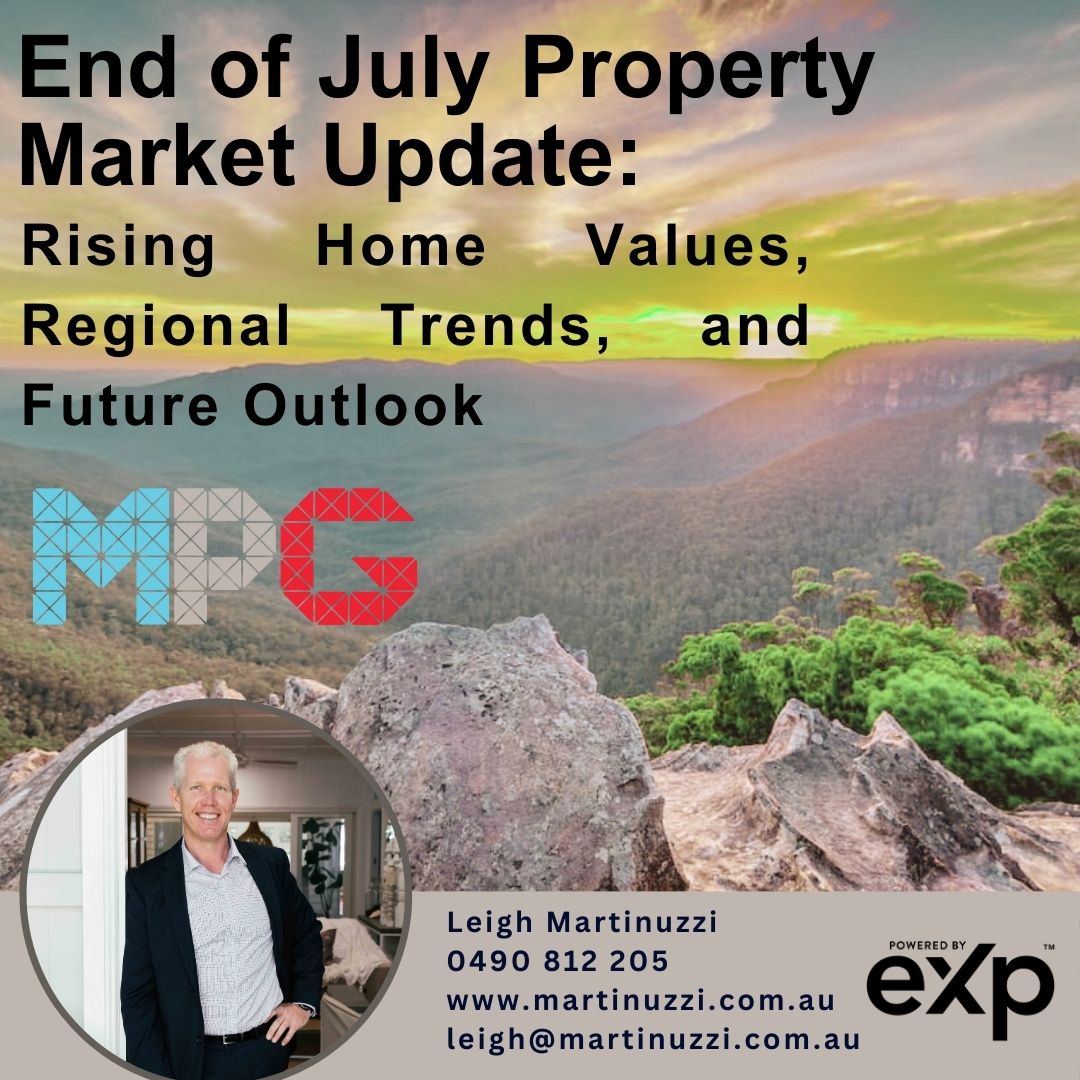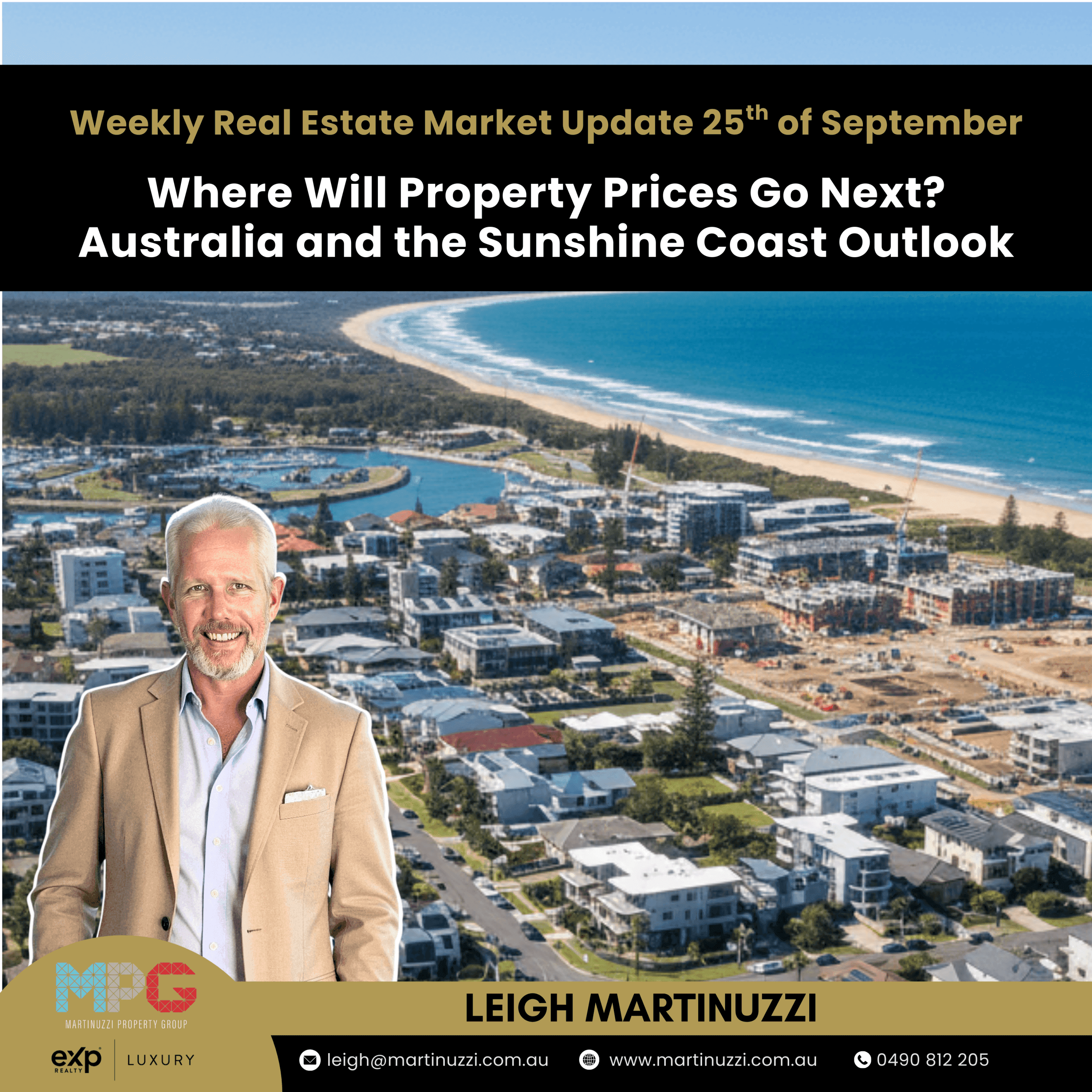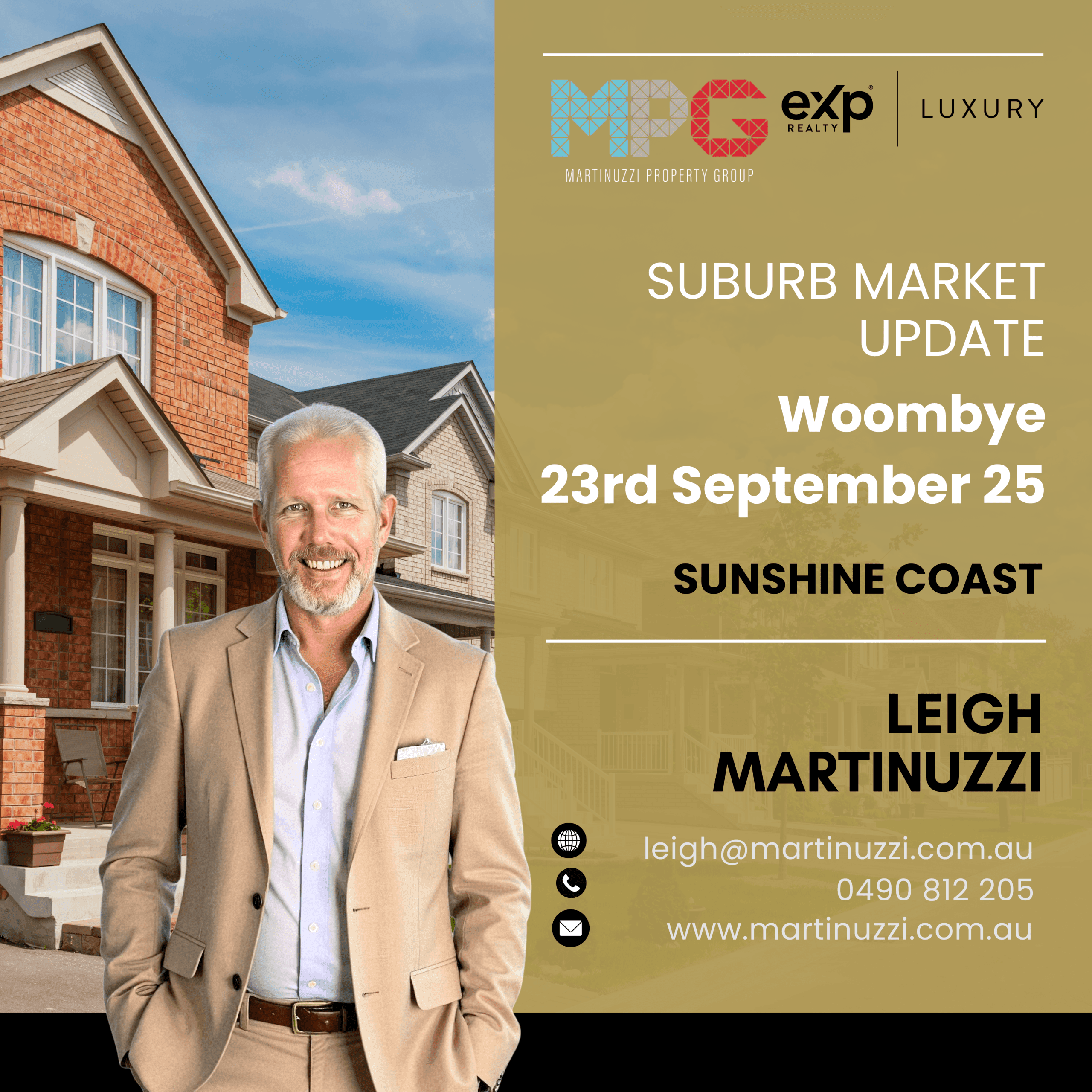End of July Property Market Update: Rising Home Values, Regional Trends, and Future Outlook
Weekly Real Estate Market Update with Leigh Martinuzzi MPG
As we move through mid-2024, the Australian property market continues to display intriguing trends. National home values rose by 0.5% in July, marking 18 consecutive months of growth. The Home Value Index has surged 13.5% since January 2023, when we saw prices drop by 7.5%, with new record highs reached in November last year. The median house price in Australia now stands at $1,141,987.
The market conditions across Australia remain diverse, with property cycles showing an increased level of unpredictability. Leading the growth are Perth with a 6.2% quarterly gain, Adelaide with 5%, and Brisbane with 3.8%. On the other hand, Sydney’s momentum has slowed to 1.1% over the quarter, while Melbourne and Hobart have experienced declines of -0.9% and -0.8%, respectively.
Supply remains a crucial indicator of price growth. Areas experiencing historic shortages are seeing the best growth. Brisbane, Adelaide, and Perth have stock levels still 30% lower than the averages for this time of the year. Affordability also plays a significant role, with markets having lower price points showing higher demand. This, coupled with lower stock levels, keeps these markets confident.
On the Sunshine Coast, the trend is similar. More affordable price categories are experiencing higher growth, with properties in the lower price quartiles rising more significantly than those in the upper quartile. Lower quartile homes in Australia have grown by 3.3% over the past three months, compared to a 0.8% rise in higher quartile values. On the Sunny Coast there is a strong appetite for homes in the $700,000 to $900,000 range, while demand is slowing in the $1M plus range. However, properties that represent good value continue to attract buyers willing to pay higher prices.
CoreLogic estimates that there will be approximately 125,000 property sales across Australia in the three months to July, with just 121,000 new listings coming to the market. This balance is becoming more evident as some homes remain on the market for longer periods, bumping up the total listing count.
CoreLogic also reported that dwelling approvals dropped by -6.5% in June, representing more strain on the building sector. However, construction costs have slowed, providing some stability. The cost to build will not be reduced, and finding suitable land on the Sunshine Coast remains a challenge. However, with more certainty in build costs, builders will have more confidence that their expenses will not blow out due to further rises in materials and construction costs.
Looking ahead, housing affordability will remain an issue, likely resulting in a further slowing of price growth over the longer term. The March dwelling value to income level rose to 7.7, which experts suggest will rise again when new data is released next month. There is still speculation of a further rate rise when the RBA meets next week. While this speculation, combined with the fact that we are mid-winter and it’s tax time, tends to soften market activity, I believe we will not see a further rate rise. Some major banks, like NAB, have lowered their variable interest rates from 6.6% to 5.99%, indicating that interest rates might be more likely to fall than rise in the coming months. I expect the RBA to hold the cash rate next week.
This scenario will push out many who are looking to enter the market and increase demand in more affordable markets. I expect prices to continue to rise in the short term on the Sunshine Coast and anticipate that more demand will create more buoyant regional markets. For example, my colleagues in Harvey Bay are reporting huge buyer demand, with many buyers selling up in areas like the Gold Coast and, to a lesser extent, the Sunshine Coast, making the most of their property equity to buy further afield.
For further insights you can always reach out for a personalised consultation to better understand how these trends might impact your real estate decisions. Feel free to click the link to book a consultation with me at no charge.





